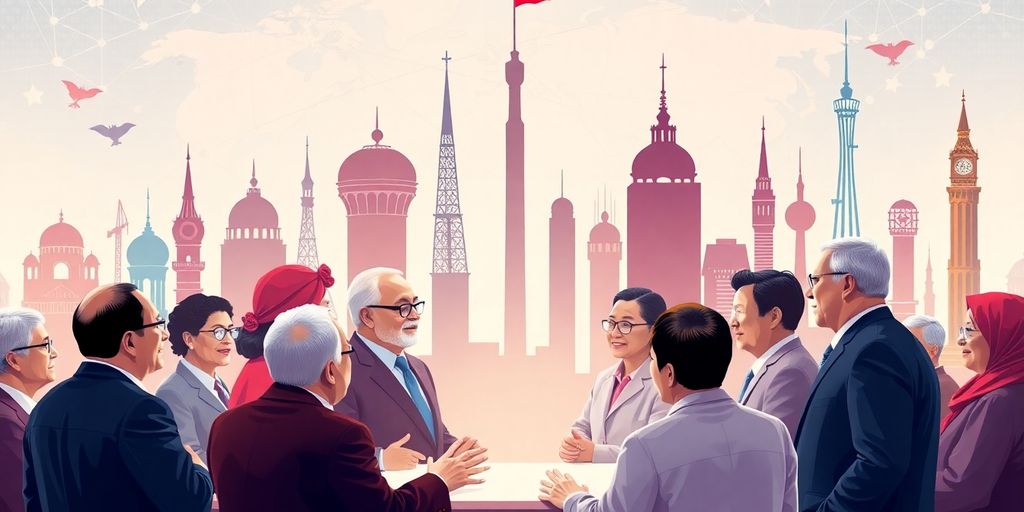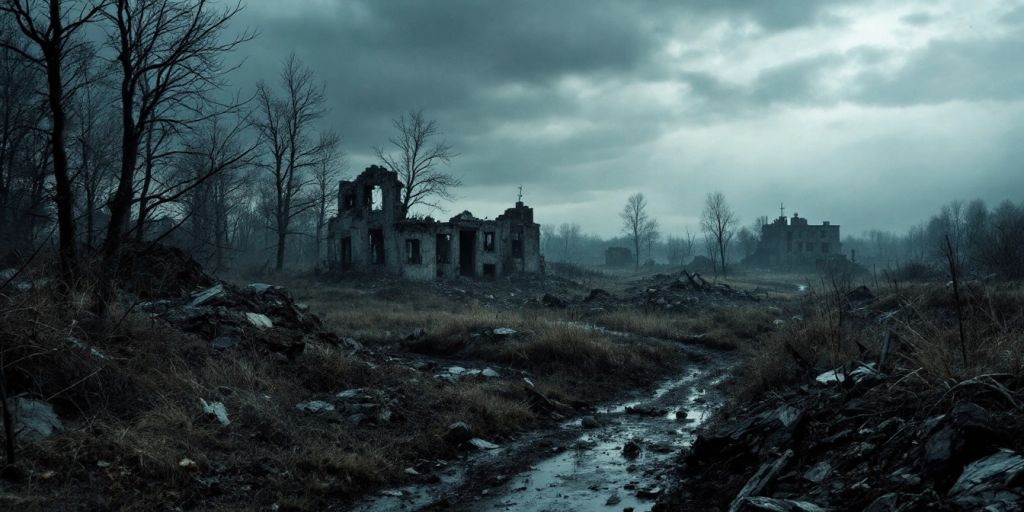Why Offensive Realism is the Only Method That is Working in Politics Today

In today’s political landscape, offensive realism seems to be the strategy that’s gaining traction. This theory, which suggests that states are always seeking more power to ensure their survival, is becoming more relevant as global tensions rise. Unlike defensive realism, which focuses on maintaining the status quo, offensive realism argues that states must be aggressive to secure their position. With power dynamics constantly shifting, this approach appears to be the only method that’s truly effective in navigating the complex world of international politics.
Key Takeaways
- Offensive realism focuses on power maximization, unlike its defensive counterpart.
- John Mearsheimer is a key figure in developing offensive realism theory.
- The theory suggests that international anarchy drives states to seek dominance.
- Critics argue about its assumptions, but it remains influential in political strategy.
- Offensive realism is applied beyond international politics, including domestic arenas.
The Core Principles of Offensive Realism

Understanding Power Maximization
Offensive realism is all about power. It’s like a game of chess where every move is about gaining the upper hand. States are always looking to maximize their power because that’s the best way to ensure their survival. In a world where threats are everywhere, being the biggest and baddest on the block is the safest bet. This isn’t just about military might; economic strength, political influence, and even cultural sway are all part of the equation. Power isn’t just about having it; it’s about using it to keep others in check.
The Role of Anarchy in International Politics
Anarchy sounds like chaos, but in international politics, it means there’s no overarching authority keeping everyone in line. States are on their own, navigating a world where alliances can shift, and threats can pop up out of nowhere. This lack of a global ‘police’ means that states have to fend for themselves, often aggressively. Anarchy pushes countries to be proactive, always ready to defend their interests and expand their influence when the opportunity arises. It’s not about causing chaos but about responding to a world where order has to be self-imposed.
Rational Actors and Survival Strategies
In the world of offensive realism, states are like poker players, always calculating the odds and making strategic bets. They’re rational actors, which means they’re expected to make decisions that best serve their survival and growth. This involves strategies that might seem aggressive or even ruthless, but in the high-stakes game of global politics, playing nice doesn’t always cut it. States prioritize their own security, sometimes at the expense of others, because the ultimate goal is to stay in the game and come out on top.
Offensive realism paints a picture of international relations that’s not about cooperation or harmony but about competition and dominance. It’s a world where states are driven by a fundamental need to secure themselves in an unpredictable environment.
Historical Context and Evolution of Offensive Realism
From Classical to Neorealism
Offensive realism didn’t just pop out of nowhere. It evolved from classical realism, which focused on the idea that states are driven by human nature to seek power. Then came neorealism, which shifted the focus to the anarchic structure of the international system. Neorealism argues that states prioritize power maximization over security. But this wasn’t enough for some thinkers, who felt that the theory needed more teeth.
Mearsheimer’s Contributions
John Mearsheimer is a big name here. He took neorealism and added a twist, arguing that states are not just trying to survive—they’re trying to dominate. This idea of power maximization is what sets offensive realism apart. Mearsheimer’s work has been pivotal in shaping how we understand international politics today, putting offensive realism at the forefront.
Critiques and Counterarguments
Of course, not everyone buys into offensive realism. Critics point out that it overlooks factors like "democratic peace" and international institutions. They argue these can mitigate the aggressive tendencies that offensive realism predicts. However, some scholars say that the efforts to maintain these institutions actually underscore the need for powerful arrangements to keep states from reverting to egoism and dominance.
The debate continues, but offensive realism remains a key framework for understanding why states act the way they do in the international arena. It’s not without its flaws, but it offers a lens that aligns closely with some aspects of human behavior.
Offensive Realism in Modern Politics

Case Studies of Power Dynamics
In today’s political landscape, the game of power is as fierce as ever. Countries are always on the lookout to bolster their influence. Take the United States and China, for example. Both are locked in a sort of tug-of-war over economic dominance and military prowess. It’s like a chess game where each move is calculated to outsmart the other. And then there’s Russia, flexing its muscles in Eastern Europe. These examples show how offensive realism plays out in real-world scenarios, with states striving to maximize their power.
Impact on International Relations
Offensive realism has a profound impact on how countries interact on the global stage. Anarchy in international relations means there’s no overarching authority to keep nations in check. This leads to a self-help system where states must fend for themselves. The result? A constant state of competition and suspicion. Nations are always wary of each other, leading to alliances and rivalries that shift with the tides of power.
Comparisons with Defensive Realism
While both offensive and defensive realism stem from the same realist tradition, they differ in their approach to power. Offensive realism suggests that states should always be on the offensive, seeking to maximize power. Defensive realism, on the other hand, argues for maintaining enough power to ensure security without provoking others. It’s like the difference between a boxer always on the attack versus one who waits for the right moment to strike. In today’s world, offensive realism seems to have the upper hand, as states aggressively pursue their interests.
Theoretical Extensions and Applications
Beyond International Politics
Offensive realism isn’t just about countries clashing on the world stage. It’s got more reach than that. This theory dives into all sorts of human interactions, wherever there’s a power play involved. Think about it like this: whether it’s ancient tribes fighting over land or companies battling for market dominance, offensive realism has something to say. The theory suggests that humans, driven by a desire for power, behave similarly across different arenas. From the Roman Empire’s expansion to the cutthroat nature of today’s business world, the principles remain largely the same.
Offensive Realism in Domestic Arenas
Now, let’s bring it closer to home. In domestic politics, offensive realism plays out in the race for control and influence. Political parties, much like states, are always on the lookout for ways to consolidate power, often at the expense of rivals. This isn’t just about winning elections; it’s about shaping the narrative and controlling the agenda. Even in conservative shifts among young men, you can see how the desire for stability and power influences political leanings.
Evolutionary Perspectives
Here’s where it gets really interesting. Offensive realism has ties to evolutionary theory. It’s not just about what happens now but how we’ve been wired to act over centuries. The idea is that just like animals in the wild, humans have evolved strategies for survival and dominance. This evolutionary angle helps explain why offensive realism might make sense in many scenarios. We act in ways that maximize our chances of coming out on top, whether that’s in politics, business, or social situations.
In a world where power dynamics shape every interaction, understanding the roots of our competitive nature can offer insights into why offensive realism seems to fit so many situations today. It’s not just about international politics but about the very essence of human behavior.
Challenges and Criticisms of Offensive Realism
Logical Flaws and Assumptions
Offensive realism, despite its compelling narrative, isn’t without its critics who highlight some logical inconsistencies. One major criticism is that it often assumes all states are inherently aggressive and power-hungry, which isn’t always the case. This assumption can lead to a security dilemma, where states, in their quest to maximize security, inadvertently provoke others, creating a cycle of tension and conflict. Some scholars argue that this view oversimplifies complex international relations, ignoring the nuances of diplomacy and cooperation. Moreover, the theory’s reliance on the idea that states are rational actors can be problematic, as it overlooks the unpredictable nature of human decision-making.
Security Dilemma Revisited
The security dilemma is a core concept in offensive realism, but it’s also a point of contention. Critics argue that the theory’s portrayal of all states as potential threats can lead to unnecessary arms races and conflicts. The idea that increasing one’s security inevitably decreases the security of others seems too rigid and doesn’t account for peaceful coexistence strategies. This leads to a scenario where states are constantly on edge, expecting aggression from others, which can be a self-fulfilling prophecy.
Regional Versus Systemic Analysis
Another criticism of offensive realism is its focus on systemic over regional analysis. While the theory provides a broad framework for understanding international relations, it often fails to account for regional dynamics that can significantly influence state behavior. Critics point out that the theory’s emphasis on power maximization at the international level overlooks the importance of regional stability and cooperation. This can result in a skewed understanding of global politics, where regional conflicts are seen as mere byproducts of larger power struggles.
Offensive realism, while influential, often paints a picture of international politics that’s too black and white. It tends to ignore the shades of gray that define real-world diplomacy and state interactions. Understanding its limitations is crucial for a more nuanced approach to global politics.
In summary, while offensive realism provides a robust framework for analyzing international relations, its critics argue that it oversimplifies state behavior and overlooks the roles of cooperation and diplomacy. This critique is echoed in discussions about offensive realism and its applicability in today’s complex political landscape.
Why Offensive Realism Prevails Today
Adaptation to Contemporary Politics
In today’s fast-paced global scene, offensive realism stands out because it adapts well to the shifting dynamics of power. The theory, rooted in the idea that states are always seeking to maximize their power, aligns with the way nations operate in an unpredictable world. The constant jockeying for dominance, whether through military might or economic influence, reflects the core principles of offensive realism. States are compelled to act aggressively to secure their survival, a concept that resonates strongly in the current international climate.
Effectiveness in Power Struggles
Offensive realism’s focus on power maximization makes it particularly effective in managing international power struggles. Nations are often driven by the need to project strength and deter potential adversaries, which is a fundamental aspect of this theory. The approach suggests that by accumulating power, states can better protect themselves from threats and ensure their longevity. This strategy is evident in various global conflicts where the balance of power is constantly tested.
Future Implications for Global Politics
Looking ahead, offensive realism offers a compelling framework for understanding future global politics. As international tensions continue to rise, the theory provides insights into how states might behave in pursuit of their interests. The emphasis on power and security will likely remain central to international relations, shaping the interactions between nations. This perspective suggests that, despite criticisms, offensive realism will continue to be a dominant force in understanding and predicting state behavior in the years to come.
In a world where the stakes are high, the principles of offensive realism offer a lens through which we can interpret the actions of states. The theory’s emphasis on power and survival is not just a reflection of international politics but a broader commentary on human nature itself.
- Offensive realism aligns with the instinctual behaviors of states seeking power.
- It provides a practical approach to understanding international relations.
- The theory’s focus on strength and deterrence is relevant in today’s global landscape.
By understanding these dynamics, we can better grasp why offensive realism remains a key method in political strategy today. The drive for power, as outlined in effective deterrence, underscores the ongoing relevance of this theory.
Conclusion
In today’s political landscape, offensive realism seems to be the strategy that actually gets results. While critics argue about its aggressive nature, the reality is that states are constantly in a power struggle, and this theory just acknowledges that fact. It’s not about being the biggest bully on the block; it’s about ensuring survival in a world where intentions are never clear. Sure, it’s not perfect, and it has its flaws, but when push comes to shove, offensive realism provides a framework that aligns with how states behave when the stakes are high. It’s a tough world out there, and this approach might just be the most honest reflection of that reality.
Frequently Asked Questions
What is offensive realism?
Offensive realism is a theory in international relations that suggests countries are always trying to increase their power to ensure their safety. It was developed by John Mearsheimer.
How does offensive realism differ from defensive realism?
While both theories focus on power, offensive realism believes countries should always try to gain more power, whereas defensive realism thinks too much power can make a country less safe.
Why is offensive realism important in politics today?
Offensive realism helps explain why countries act aggressively in international politics, especially when they feel threatened or want to be more powerful.
Who developed the theory of offensive realism?
John Mearsheimer, a political scholar, developed the theory of offensive realism.
What are the main ideas behind offensive realism?
The main ideas are that the world is chaotic, countries have some military power, they can’t trust each other, they want to survive, and they act rationally to protect themselves.
How does offensive realism apply to today’s world?
It shows why countries might act aggressively to protect themselves or gain more power, especially in a world where they can’t trust each other’s intentions.








Responses